I'm relatively new to using Python and have been re-writing some of my MatLab scripts. I have a script that creates 7 figures within a loop. After they have been made I want to save each one.I am having two problems, illustrated by the following MWE.
Problem 1 - If I save the figure in the loop it overwrites itself and I end up with only one plot (the last iteration of the for-loop), when there should be 6 plots. I can't seem to find how to specify the figure I want to save to do it after the loop, just documentation on saving the current figure which obviously isn't working.
Problem 2 - While this isn't a real problem for me, it indicates I don't understand what is happening and I'd like to learn more and improve my understanding. Before I added the line
fig3, ax3 = plt.subplots()
Figure 2 was empty. I'm not sure why I'd need to initiate a third empty figure in order for Figure 2 to show. In this MWE I don't need a third figure, and in the script I'm working on I need to initiate a 8th Figure to show Fig 7. Just comment out this line to see what I mean.
Thank you in advance for you patience and help with these problems. Here is the code for the MWE:
# Test for plotting on multiple figures for multiple angles within a for-loop
#Import packages
import numpy as np
from math import *
from astropy.table import Table
import matplotlib.pyplot as plt
from mpl_toolkits import mplot3d
plt.close('all')
# define the initial conditions
x = 0 # initial x position
y = 0 # initial y position
z = 0 # initial z position
v = 30
g = -9.8
lst = [ 20, 30, 40, 45, 50, 60] # launch angles
alpha= np.array(lst)
def size(arr):
if len(arr.shape) == 1:
return arr.shape[0], 1
return arr.shape
[nn,mm] = size(alpha) #https://appdividend.com/2022/02/02/python-array-length/
#create plots:
ax1 = plt.axes(projection='3d')#fig1, ax1 = plt.subplots()
fig2, ax2 = plt.subplots(1,1)
fig3, ax3 = plt.subplots()
for kk in range(nn):#= 1:nn
theta = alpha[kk]*pi/180.0
# reset x=y=z=0 for next iteration since they are used to initialize the tables
x = 0 # initial x position
y = 0 # initial y position
z = 0 # initial z position
t = 0 # starting at time 0
x3table = [x/3]
y3table = [y/3]
z3table = [z/3]
h = 0.0100
tf = 200
N=ceil(tf/h)
for i in range(N):#for i = 1:N
t = t + h #t(i+1) = t(i) + h
# update position
x = v*t*cos(theta)
y = v*t*sin(theta) - ((0.5 * g) * (t ** 2))
z = 0.1*x
""" appends selected data for ability to plot"""
x3table += [x/3]
y3table += [y/3]
z3table += [z/3]
x3table, y3table = zip(*sorted(zip(x3table, y3table)))
###############################################################################################################################
## figure 1 - 3 dimensional position
# PLOT 1
###############################################################################################################################
#fig1 = plt.figure(1)
ax1.plot3D(x3table ,z3table ,y3table)
plt.title('Fig1 Test')
plt.savefig('Subtest_fig1.png', bbox_inches='tight')
#if k==nn
#plt.savefig('Subtest_fig1.png', bbox_inches='tight')
plt.clf()
###############################################################################################################################
## figure 2 - 2 dimensional position
# PLOT 2
###############################################################################################################################
#fig2 = plt.figure(2)
ax2.plot(x3table ,y3table)#,'linewidth',2)
plt.title('Fig2 Test')
plt.savefig('Subtest_fig2.png', bbox_inches='tight')
#if k==nn
#plt.savefig('Subtest_fig1.png', bbox_inches='tight')
plt.clf()
plt.show()
The figures should appear like as shown in Subtest_fig1.png and Subtest_fig2.png (6 plots on each figure).




